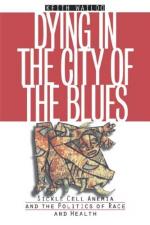|
This section contains 254 words (approx. 1 page at 300 words per page) |
Sickle cell anemia is an inherited blood disorder striking almost exclusively individuals who are of African descent. Sickle cell anemia is a recessive trait, meaning that an individual only has the disease if he or she receives a gene for it from each parent. Individuals who have only one faulty gene are considered to have the sickle cell trait, but not the disease. Interestingly enough, sickle cell trait has been studied, and appears to provide some protection against other diseases, such as malaria (a disease which is rampant within the countries of Africa, where the sickle cell gene is believed to have originated).
The oxygen-carrying component of the red blood cell is called hemoglobin. In sickle cell anemia, a single incorrect amino acid is substituted at one point within the structure of the hemoglobin molecule. This results in red blood cells which have a characteristic sickle (or half-moon) shape, instead of the usual indented disc shape. These misshapen red blood cells are prone to damage, and are destroyed more quickly than are normal red blood cells, resulting in a low red blood cell count (anemia). The sickled cells also tend to move sluggishly through small vessels, sometimes blocking those vessels for a period of time. When a vessel is blocked, the tissues or organs usually served by that vessel are deprived of oxygen, resulting in damage and pain. Episodes of such pain are referred to as "crises." These crises can be precipitated by infection and by low-oxygen states.
|
This section contains 254 words (approx. 1 page at 300 words per page) |


